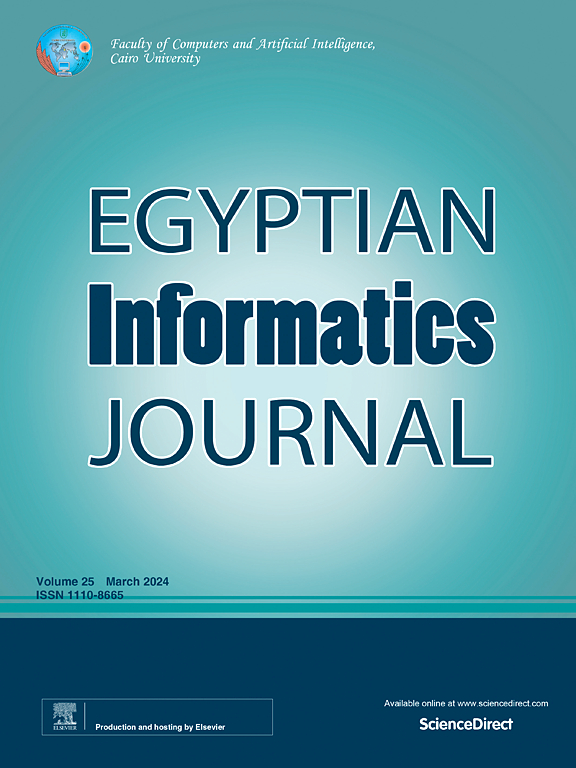An improved routing technique for energy optimization and delay reduction for Wireless body area networks
IF 5
3区 计算机科学
Q1 COMPUTER SCIENCE, ARTIFICIAL INTELLIGENCE
引用次数: 0
Abstract
Wireless Body Area Networks (WBANs) have a lot of potential applications in the medical domain for remote health monitoring. The critical concerns which have a significant impact on WBAN’s performance are energy efficiency and end-to-end latency. This paper proposes an energy-efficient routing technique for WBAN that decreases network delay, lowers the bit error rate, and increases the network’s total lifespan. To improve the performance of WBAN the proposed Energy-Efficient Adaptive Routing Technique (EEART) performs clustering, scheduling, and optimisation namely, Glowworm Swarm Optimisation (GSO). The network is initially split into clusters, and each cluster is assigned a Cluster Head (CH). During scheduling, the load is distributed among the cluster nodes based on time, priorities, and energy of nodes for effective operation of the network. The GSO adjusts the configuration dynamically in accordance with the conditions of the network for finding an optimal path. The simulation results demonstrate that the energy and latency of the WBAN network improves considerably with an increased efficiency of 30–35%. The proposed technique performs better in terms of energy consumption, throughput, Packet Delivery Ratio (PDR), and end-to-end delay in comparison to other existing routing protocols.
求助全文
约1分钟内获得全文
求助全文
来源期刊

Egyptian Informatics Journal
Decision Sciences-Management Science and Operations Research
CiteScore
11.10
自引率
1.90%
发文量
59
审稿时长
110 days
期刊介绍:
The Egyptian Informatics Journal is published by the Faculty of Computers and Artificial Intelligence, Cairo University. This Journal provides a forum for the state-of-the-art research and development in the fields of computing, including computer sciences, information technologies, information systems, operations research and decision support. Innovative and not-previously-published work in subjects covered by the Journal is encouraged to be submitted, whether from academic, research or commercial sources.
 求助内容:
求助内容: 应助结果提醒方式:
应助结果提醒方式:


